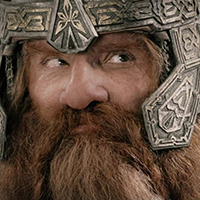https://www.uspto.gov/about-us/news-updates/remark
Post# of 82692

Excerpt on Alice.........
Quote:
Now as to patents: Discussing everything we are doing on the patents front would probably take the rest of this conference, something Henry would probably not be happy about. So in the interest of time, I’ll focus my remarks on a specific proposal for Section 101—patentable subject matter.
As many of you know, we recently issued to our examiners two new guidance memos on Section 101: the first dealing with the “conventionality” step in the Mayo/Alice framework, and the second on “methods of treatment” claims. Our data shows that these two memos have already improved the 101 analysis during examination.
But significantly more work needs to be done, especially on the “abstract idea” exception.
I know that IPO committees have been hard at work on a legislative fix to Section 101. Indeed, IPO and AIPLA have joined forces recently and proposed new statutory language. Should Congress be interested in moving forward with hearings or legislation, the USPTO would be very happy to help. As we all know, however, any legislative effort takes a long time, and the result is uncertain.
In the meantime, the USPTO cannot wait. We have thousands of examiners who struggle with these issues on a daily basis. Our examiners need additional guidance now. And so do patent applicants, patent owners, and the public. Whether through legislation or otherwise, there is a growing consensus that the issue must be promptly addressed.
In fact, several Federal Circuit judges have recently filed concurrences or dissents explaining the uncertain nature of the law and calling for change.
In order to “work its way out of what so many in the innovation field consider are §101 problems,” Judge Lourie—in an opinion joined by Judge Newman—appealed to a higher authority. “Resolution of patent-eligibility issues requires higher intervention, hopefully with ideas reflective of the best thinking that can be brought to bear on the subject.”
Judge Plager, in another case, noted that “the state of the law is such as to give little confidence that the outcome is necessarily correct.” He explained that, given current §101 jurisprudence, it is “near impossible to know with any certainty whether the invention is or is not patent eligible.” And he concluded that we currently have an “incoherent body of doctrine.”
And Judge Linn explained that the abstract idea test is “indeterminate and often leads to arbitrary results.”
I agree with all these sentiments.
Judge Giles Rich, an icon of patent law with an unparalleled understanding of—and impact on—our system, stated, in 1979, the crux of the problem with respect to §101 jurisprudence. He said at the time that problems can arise due to the “unfortunate … though clear commingling of distinct statutory provisions which are conceptually unrelated, namely, those pertaining to the categories of invention in §101 which may be patentable, and to the conditions for patentability demanded by the statute…”
This was almost 40 years ago! How perceptive and prescient Judge Rich was.
Let me put this in my own words: How can a claim be novel enough to pass 102 and nonobvious enough to pass 103, yet lack an “inventive concept” and therefore fail 101? Or, how can a claim be concrete enough so that one of skill in the art can make it without undue experimentation, and pass 112, yet abstract enough to fail 101? How can something concrete be abstract?
These problems confound the most sophisticated practitioners in our patent system. People simply don’t know how to draw these distinctions. If something is not inventive, then invalidate it under 102 or 103. If something is indefinite, or too broad to be fully enabled or described, then invalidate it under 112.
We have decades of case law from the courts and millions of examinations at the PTO which guide us in our 102, 103, and 112 analyses. People know these standards and how to apply these well-defined statutory requirements.
The genius of the 1952 Patent Act, of which Judge Rich is widely viewed as a principal author, was that it categorized the bases for patentability. Our recent §101 case law mushes them all up again. As Judge Rich said, this “may lead to distorted legal conclusions.” And it has. And it must end.
 (0)
(0) (0)
(0)